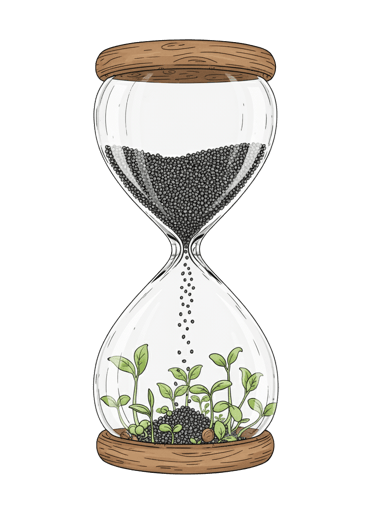A WORLD IN FAST-FORWARD
We live in an age governed by speed. From express delivery to instant communication, everything around us seems to pulse with urgency. Design, too, has been swept up in this fast-paced current — shaped by the demands of production cycles, trends, and convenience. But not all design plays by these rules.
In quiet resistance to the culture of “fast,” a slower, more reflective design ethos has emerged. Slow Design is not merely an aesthetic, nor just a methodology — it is a philosophy of making, grounded in time, care, and connection. It invites us to rethink not only how things are made, but why they are made, for whom, and to what end.
In this article, we explore the origins and essence of slow design, the values it embodies, and the spaces where it thrives — from sustainable fashion to architecture and beyond. Ultimately, it asks us to slow down and consider: What kind of world are we designing toward?
WHAT IS SLOW DESIGN?
Slow Design arose in the early 2000s as part of a broader cultural critique of industrial acceleration. Drawing inspiration from the Slow Food movement (founded in Italy in 1986), slow design extends the idea of slowness from cuisine to creative practice — promoting sustainability, ethics, and emotional connection in the objects and systems we design.
Design theorist Alastair Fuad-Luke describes slow design as “design that reveals experiences, narratives, and meanings traditionally overlooked or ignored” (Fuad-Luke, 2004). Rather than focusing solely on form or function, it emphasises process, context, and intention. It asks us to consider the full lifecycle of a product: from raw material to making, to use, reuse, and eventual decay or transformation.
Key principles of Slow Design often include:
Transparency – Knowing where materials come from and how they are processed
Localism – Using locally sourced resources and engaging local communities
Longevity – Creating products and systems that endure in time and value
Empathy – Designing with sensitivity to both human and environmental needs
Time – Valuing slowness as a design material, not an obstacle
In essence, Slow Design is not anti-progress — it is a redefinition of progress, placing care, culture, and consciousness at the centre of creation.
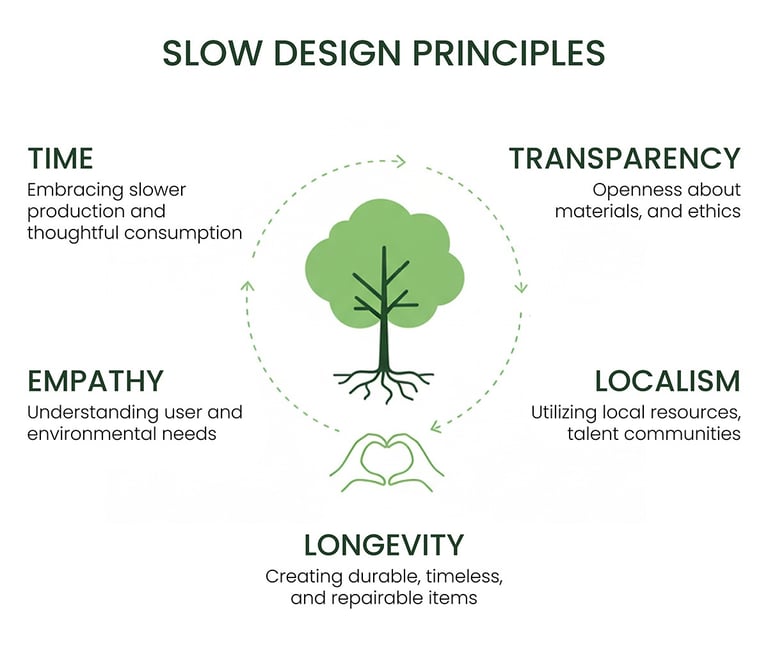

This infographic illustrates the five key principles of the Slow Design movement: This approach to design stands in opposition to fast production and consumption, and it focuses on creating objects that are durable and more meaningful. At the center of the graphic, the tree symbolises growth, deep roots, and a connection to nature, which summarises the entire philosophy of Slow Design.
THE AESTHETICS OF SLOWNESS
In contrast to the polished uniformity of mass-produced goods, slow design embraces an aesthetic of imperfection, tactility, and presence. Its beauty often lies in the subtle — in the grain of natural wood, the hand-thrown curve of a ceramic bowl, or the uneven stitching of a hand-mended garment.
This approach resonates with the Japanese concept of wabi-sabi — a worldview that appreciates the transient, the imperfect, and the incomplete (Juniper, 2003). Slow Design doesn’t seek flawlessness; it seeks authenticity, often expressed through texture, trace, and time.
◉ Time as Texture
Rather than hiding signs of use or ageing, slow design celebrates them. Objects gain meaning and beauty through time — they are made to age, to be cared for, to become part of a story.
Example: Kazunori Hamana, a Japanese potter, creates large ceramic vessels left exposed to weathering by the sea. Each piece tells a unique story of erosion, salt, and time — becoming more beautiful as it decays.
◉ Imperfection as Identity
Irregularity becomes a marker of human touch. Slow objects often bear signs of their making — hammer marks, brush strokes, knots in the wood — all of which add emotional texture.
Example: Martino Gamper’s “100 Chairs in 100 Days” project celebrated imperfection by assembling mismatched furniture fragments into unique, expressive pieces (Gamper, 2009).
◉ Material Honesty
Slow aesthetics highlight the natural qualities of materials. There is little desire to over-process or disguise them — the grain, the fibre, the patina remain visible and honest.
Example: The work of Anderssen & Voll, a Norwegian design studio, often features local materials like birch and wool, echoing traditional Nordic craft while maintaining a contemporary sensitivity.
In short, slow aesthetics speak quietly — but meaningfully — inviting us into deeper sensory and emotional engagement with what we touch and use.
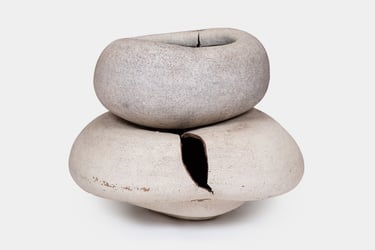

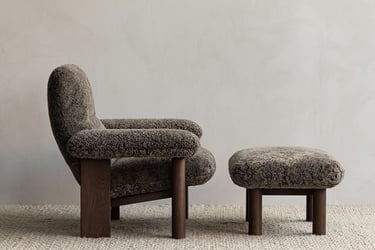

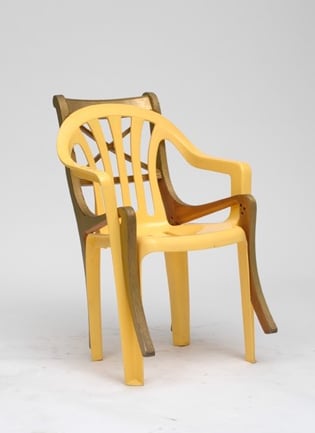

Fig. 1. Kazunori Hamana, Yukiko Kuroda, Ceramic and Urushi
Fig. 2. Martino Gamper, 100 Chairs in 100 Days
Fig. 3. Anderssen & Voll, a Norwegian design studio
SLOW DESIGN IN PRACTICE
Slow Design is not confined to a single medium or field — it stretches across architecture, fashion, product design, digital culture, and urban planning. Wherever slowness is embraced, we find a commitment to sustainability, storytelling, and conscious making.
Architecture: Building with Place and Time
Architects inspired by slow design create buildings that respect climate, culture, and community.
Example: Francis Kéré’s award-winning buildings in Burkina Faso use compressed earth blocks and participatory construction, rooted in local materials and tradition (Kéré, 2014).
Fashion: From Fast to Thoughtful
Slow fashion counters the environmental cost of fast trends by emphasising craftsmanship, ethical sourcing, and long-term value.
Example: Story mfg., a UK-based brand, uses plant-based dyes and collaborates with artisanal communities to produce garments designed to improve with wear and time (Black, 2021).
Product Design: The Poetics of Utility
In object design, slow principles manifest through low-impact materials, repairability, and emotional resonance.
Example: Super-cyclers, an Australian collective, transforms recycled plastic into poetic objects that raise awareness about waste (Gura, 2012).
Digital Design: A Slower Interface
Even in digital design, slowness is gaining relevance. Designers are creating interfaces that support focus, reflection, and healthier digital habits.
Example: The Light Phone, a minimalist mobile device, prioritises essential functions (calls, messages) and encourages disconnection, reflecting the “Time Well Spent” design philosophy (Harris, 2017).
Urban Planning: Cities at a Human Pace
Slow urbanism prioritises walkability, green spaces, and community life over car-centric planning.
Example: Copenhagen, often cited as one of the most liveable cities, offers a model for slow urban design through its cycling infrastructure, pedestrian-friendly streets, and public realm design (Gehl, 2010).
WHY SLOW DESIGN MATTERS TODAY
In an age of climate crisis, social fragmentation, and screen fatigue, Slow Design offers more than aesthetics — it offers a mindset for sustainable futures.
Design has always shaped how we live. Slow Design asks us to shape that life more consciously — to favour depth over speed, care over convenience, and relationships over transactions. It is design as an act of empathy, of stewardship, of long-term thinking.
As Fuad-Luke writes, “Slow design is about creating spaces and artefacts that encourage reflection rather than reaction” (Fuad-Luke, 2009). It doesn’t reject innovation; it reimagines its purpose — putting ethics, ecology, and emotional connection at its centre.
Ultimately, slow design invites us to see beauty not just in what is made, but in how it is made, for whom, and with what consequence.
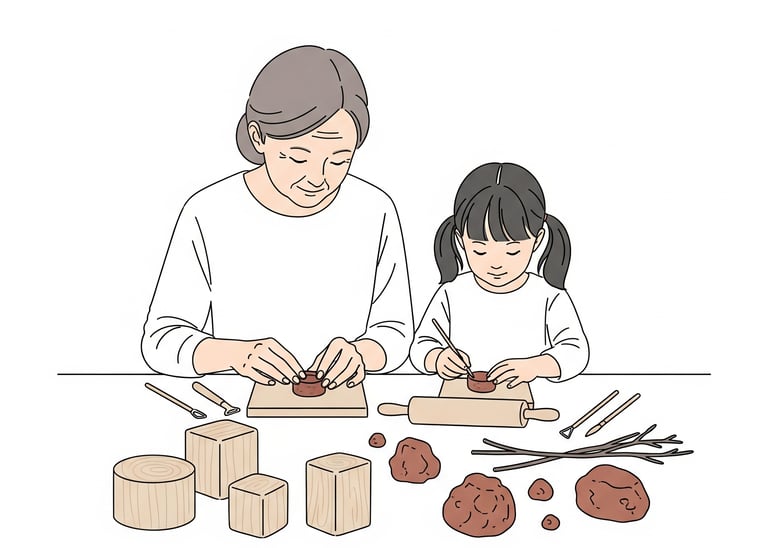

References
Antonelli, P. (2007). Design and the Elastic Mind. New York: Museum of Modern Art.
Black, S. (2021). The Sustainable Fashion Handbook. London: Thames & Hudson.
Fuad-Luke, A. (2004). The Eco-Design Handbook: A Complete Sourcebook for the Home and Office. London: Thames & Hudson.
Fuad-Luke, A. (2009). Design Activism: Beautiful Strangeness for a Sustainable World. London: Earthscan.
Gamper, M. (2009). 100 Chairs in 100 Days and Its 100 Ways. London: Dent-De-Leone.
Gehl, J. (2010). Cities for People. Washington, DC: Island Press.
Gura, J. (2012). New Design: Products and Projects for a Circular Economy. London: Laurence King Publishing.
Harris, T. (2017). How a Handful of Tech Companies Control Billions of Minds Every Day. TED Talk.
Juniper, A. (2003). Wabi Sabi: The Japanese Art of Impermanence. Boston: Tuttle Publishing.
Kéré, F. (2014). Francis Kéré: Building Community. TED Talk.
Cittaslow International. (2020). Cittaslow Charter. https://www.cittaslow.org
Image Credits
Fig. 1. Hamana, K. & Kuroda, Y., Untitled (2011/2019). Ceramic and Urushi (Japanese lacquer). © Kazunori Hamana and Yukiko Kuroda. Courtesy the artists and Blum & Poe, Los Angeles/New York/Tokyo. Ocula Magazine. Available at: Ocula Magazine
Fig. 2. Gamper, M., 100 Chairs in 100 Days. Installation view: Triennale Design Museum, Milan, 2009. Martino Gamper Official Website. Available at: Martino Gamper Official Website
Fig. 3. Anderssen & Voll, Anderssen & Voll: A Modernist Marriage. Audo Copenhagen Journal. Available at: Audo

